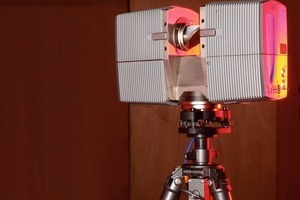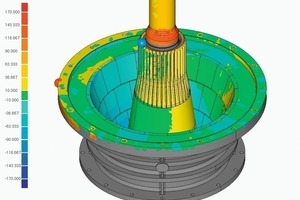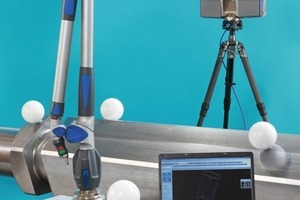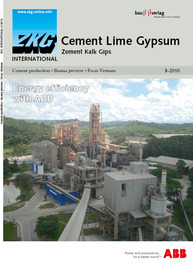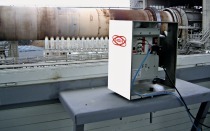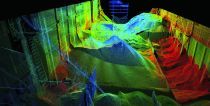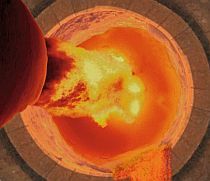Eliminating weak spots –
detecting optimization potentials
In 2009, ThyssenKrupp Fördertechnik’s business unit processing invested in the purchase of a high-performance 3D laser scanner (Fig. 1). Especially at system optimization processes and preventive maintenance, a disassembly of the affected machines is now made unnecessary to a large extend. That means a massive advantage compared to the conventional, manually processed data acquisition. Wherever spatial representation of plants was possible only by means of photographs and drawings until today, the new scanner records even large or inaccessible areas of the affected components and is ready to create a realistic image, which can be used for variance comparisons on site or edited afterwards by means of special software.
A maximum scan width of up to 120 m allows for data acquisition of whole plants, processed and converted into a virtual reality model in a very short amount of time, thanks to data rates over 970 000 points per second. Those models can be used for detection of weak spots or optimization potentials as well as for accelerated planning of new or replaced plant parts. Apart from the enormous saving of time and effort due to laser detection, it is now possible to recalculate spare part construction and dimensioning. They view the data digitally as scatter-plots, combine it with 3D CAD data and in the normal case, thanks to the exactness of the scan, they are able to reach significant improvements.
Figure 2 shows the 3D analysis of a crushing cone, made in october 2009 at a customer’s site by means of 3D scanning. The wear grades of the component are marked by the software with different colors, thus providing a precise variance comparison and an exact forecast of the remaining service life. In this case, two hours of contactless measuring helped the customer to get more planning reliability without dismantling of the crusher, avoiding longer system downtimes. To provide an even more precise measurement at lower distances,
ThyssenKrupp Fördertechnik additionally owns a compatible scan arm as an extension to the new 3D system. Offering an extremely high resolution at close range, this component is suitable especially for rapid prototyping (Fig. 3), 3D-modeling and reverse engineering purposes.
Until today, the new investment showed its strengths especially in the context of spare part optimizations and maintenance work at gyratory crushers, cement mills, axes and crushing cones produced by ThyssenKrupp Fördertechnik or other manufacturers. The 3D scanner and the scan arm provided all the demanded data in no time and without any complications, where a while ago the same process had still been very time-consuming and personnel-intensive.

